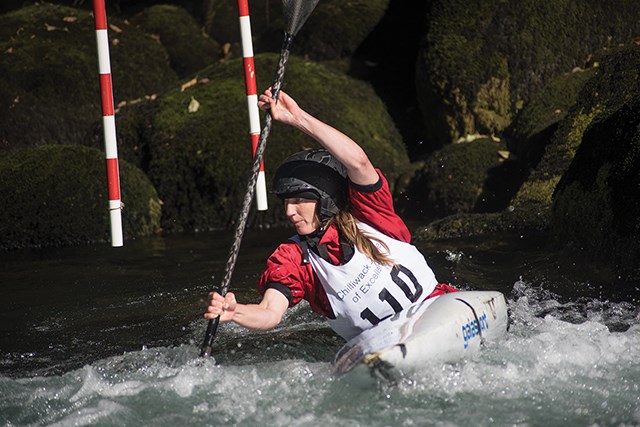While most families were chowing down on turkey, kayakers from across the corridor were burning calories on the Mamquam River on Sunday in a friendly competition aimed at bringing together competitive and recreational paddlers.
The first annual Mamquam Race Day, organized by Port Moody-based Waterflow Paddling, welcomed paddlers from three different disciplines to Squamish including canoes, kayaks and standup paddleboards (SUPs).
The goal was to bring together a diversity of boats, but also a diversity of skill levels. The event brought together potential future Olympians and recreational boaters to run the same slalom course.
“They’re the kids who get up at four in the morning for training before they got to school, and then when they’re done school they do more training. They do that all year,” said event organizer Josh Askew.
“Those recreational boaters rarely get together with the competitive stream. We do meet up every so often, but it’s not organized. I’m trying to open up channels to allow different disciplines to connect with each other and learn things. We all paddle in the same rivers, we just do it slightly differently.”
While everyone who participates in the sport shares the same water resources, historically the different disciplines have ideas about how things should be run, according to Askew. From a competitive angle, the different groups also compete for funding.
The race on Sunday was about bringing the different groups together for a competition on beginner-friendly waters.
Under the red and green hanging gates at the Mamquam access site, boaters competed in timed slalom courses.
In total, around 20 paddlers competed in the different events, with an equal number of competitive racers and recreational paddlers.
The event attracted people from Squamish, Vancouver and Whistler as well as a few paddlers from farther afield, including from California.
Not surprisingly, the competitive racers finished with faster times, but the level of cheering on the banks was equal.
Finishing fastest in the men’s competitive kayak was Connor Curson, whose best total was 67.12 seconds.
Natalie Anderson was the fastest in the women’s competitive kayak, with a time of 79.99 seconds.
With a finish time of 273.79 seconds, counting penalties, Squamish local Phil Kaiser had one of the slowest times to finish the course – but finishing the course on a standup paddleboard made for an impressive effort.
Askew said while tackling whitewater on a SUP is a growing discipline, it’s generally easier to navigate rapids at higher water levels than Sunday’s low water on the Mamquam.
From SUP to canoes to kayaks, Askew said the goal of the event was to bring together a diverse group of people, who all bring unique skills from different types of paddling.
“I’ve done a lot, and every discipline has taught me something about the other disciplines. It gives you a different perspective on the same aspects. My sea kayaking has taught me a lot about trip planning and weather conditions for example,” he said.
“The common goal is paddling,” he said. “Working together as a community is the only way to build a bigger and better future, and share sites like the Mamquam. We share ideas about access and making it easy for people to get on the river.”



